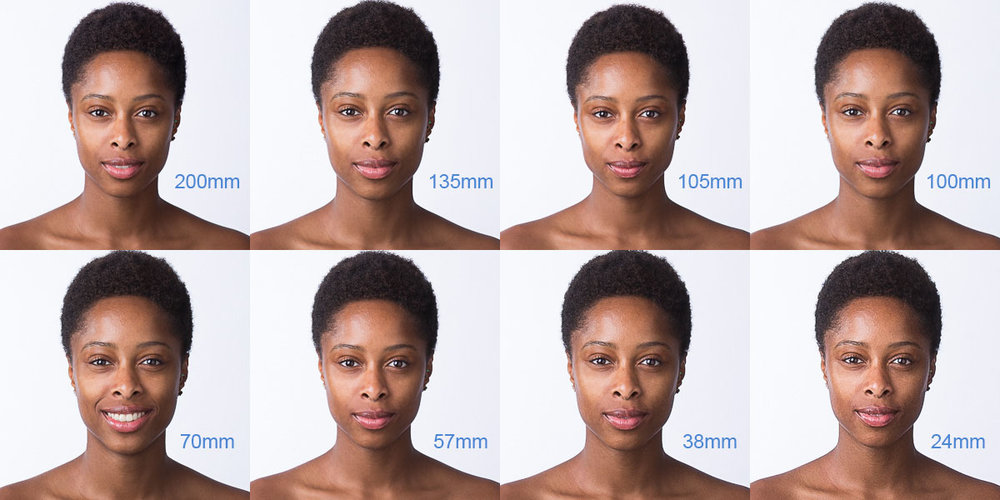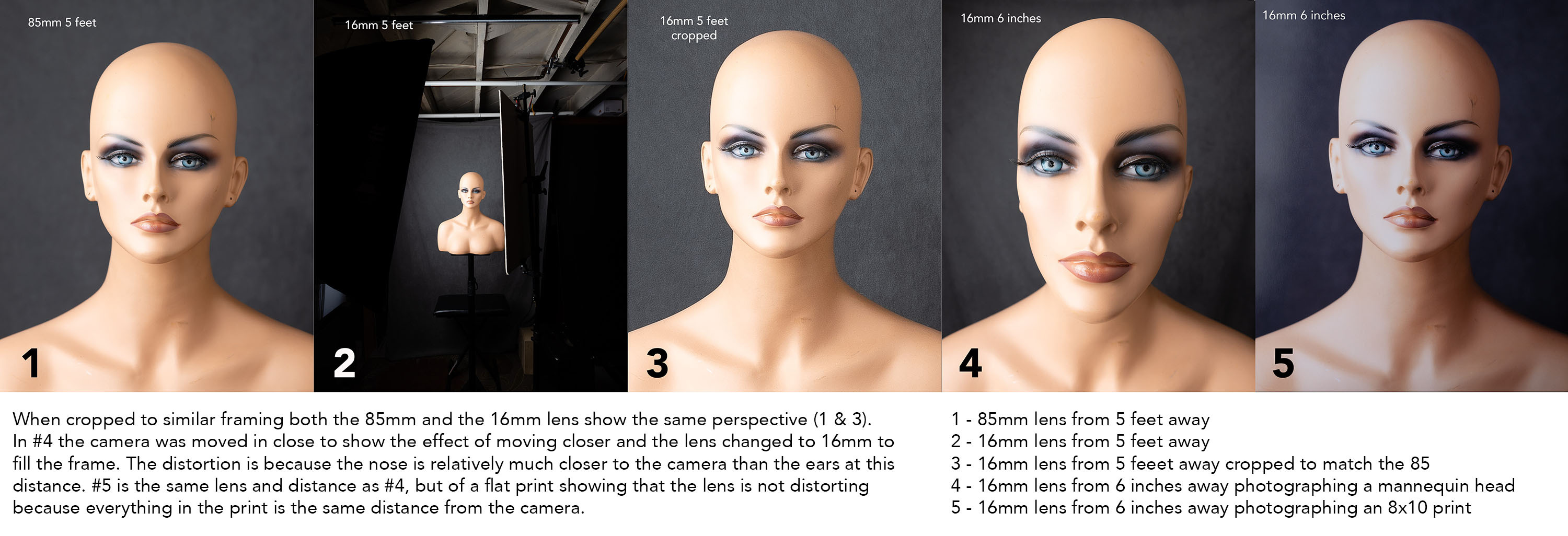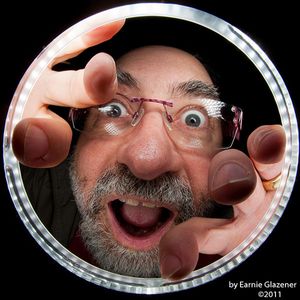One word keeps coming up, no matter if talking lighting or lenses or perspective. DISTANCE
Let’s start with the lesson drilled in my my college photography professor, Ed Sculley: "Pick the camera to subject distance that gives you the perspective you want, then select the focal length lens to fill the frame appropriately."
Wise words! They harken back to a favorite Ansel Adams quote: "A good photograph is knowing where to stand."
NOTE: All this and more is now presented in my video about lenses on Youtube.
For this post I define perspective as the relationship between the elements in a photograph. In a portrait that would be the size of the nose compared to the eyes compared to the ears, compared to the background. In an outdoor scene it might be the tree in the front yard compared to the house compared to the mountains in the distance.
Let’s start with the portrait. All too often I see articles claiming to show how lenses affect the look of a face. You’ve seen them, too. They show a photo made with a short wide angle lens where the face narrow with a big nose and then a series of photos with longer lenses where the face is flatter and flatter as the lenses get longer and longer. But what they don’t tell you is that not only did they change the lenses, but they also moved the camera. And moving the camera is what caused the changes in the looks. The lens just determines what is in the frame at the various distances.
Think of changing lenses as cropping your image in camera. All lenses show the same perspective at the same camera to subject distance. By putting on a longer lens you are magnifying the central area of the frame. If you don’t move the camera everything in the photo scales equally—the perspective remains the same. Let’s imagine a scene where you have a person in front of a window. with a tree outside. If you switch from a 50mm lens to a 100mm lens everything in the scene (the person, the window and the tree) all become twice as large in the frame, but their sizes relative to each other remain the same. If, on the other hand, you move the camera closer a more natural change occurs. The person in the front gets larger while the elements in the background appear smaller. The act of moving in might require us to change to a shorter lens to fit everything in the frame. But it isn’t the changing of the lens that altered the perspective, the move did that. The lens just determined what would fit into the frame.
As you move back away from your subject the objects in the background get larger in relation to the size of the subject—compressing the scene. Longer lenses force you to move back, leading one to think that it is the lens that is doing the compression. In reality it was moving back that compressed the scene. The longer lens magnified the subject to fill the frame better.
This is why you cannot “zoom with your feet.” Cinematographers tend to use prime lenses and move the camera (dolly in or out) to change the size relations in the frame. A zoom tempts you to keep the camera in one position and zoom to change size. But this is an unnatural look. In our 3-D world perspective changes as we move closer to and further from the objects around us. In a moving image a zoom instead of a dolly move just doesn’t quite look or feel right.
Don’t take this to mean I am against zoom lenses. Quite the opposite. I think they are very useful, especially in still photography, if used correctly. With a zoom lens you can position your camera exactly where you want it and then fine tune the framing to avoid or limit the cropping that you would need to do in post-processing.
And I do encourage you to move your feet. Step to the left or the right. Take a step in or back. Get down on the ground or up on a ladder. These all give you a different perspective. And you can do this with a prime lens or a zoom lens.
This all started a few days ago when my wife showed me this “great demonstration of lenses” in an Instagram post. I felt bad that I had to tell her it was all wrong. So I quickly made these crude illustrations to clarify things. The first video below shows photos made with the same 16mm lens at various distances and resized to show how the drawing of the face is affected by the camera to subject distance. In the second video the camera remained stationary while the lenses were changed to show that the lens doesn’t alter the drawing of the face.
https://youtu.be/EbV8OC7KHu0?rel=0
https://youtu.be/XjqNENEW2EI?rel=0
Here are side-by-side comparisons to help get the point across. The images in the first set were all made with a 24mm lens at different camera to subject distances and resized to maintain the same head size.

24mm lens at various distances
The images in this next set were all taken from the same distance with different focal length lenses and resized to maintain the same head size.

Different lenses from the same distance show the same perspective
Interestingly, the close-up perspective distortion only occurs with 3-dimensional subjects, further showing that it isn't the lens that is causing the distortion. Here is a set of photos made with an 85mm and a 16mm lens on a full frame camera. The two images at the right were both taken with the 16mm lens at 6 inches from the subject. In #4 the subject is a 3-dimensional mannequin head. In #5 the subject is an 8x10 print of photo #1.

One more example to show that telephoto compression is a fallacy. Here we have a scene from a railroad station in Kyoto, Japan photographed with four different focal lengths from 18mm to 400mm. As you can see, the area of the scene that is common to all four images (in the magenta box) is exactly the same. The longer lens just isolates the central area, but the perspective is the same as in the wide angle photo. If you were able to enlarge the 18mm photo to match the size of the 400mm photo the quality would be terrible, but the compression (perspective) would be the same.
View fullsize
For more entertainment, please visit my post about the Incredible Shrinking Space Needle.
Well, enough early morning rambling for now. I hope you got something useful out of this.
Until next time, Cheers!
John
(Oh, yeah, please buy my book! THANKS!)
